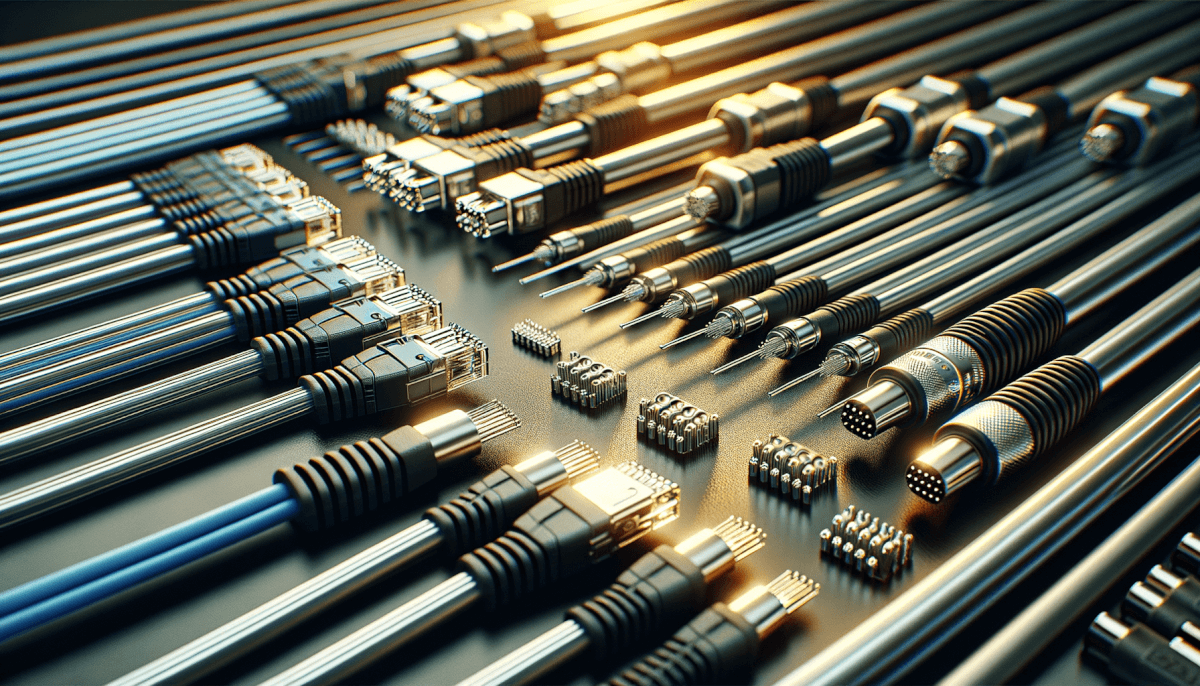Data Cabling: A Brief History of Connecting the WorldCREATED BY LISA TAYLOR
Published: 09/10/2024 @ 14:49PM Data cabling has played a crucial role in connecting the world and facilitating communication. From the early days of telegraphs to the modern fibre optic technology, data cabling has evolved significantly. Data cabling weaves, through time, connecting us all, past, present, future Data cabling may seem like a modern invention, but its roots can be traced back to the 19th century. The first form of data cabling was the telegraph, which used electrical signals to transmit messages over long distances. This breakthrough technology revolutionised communication, allowing people to send messages faster than ever before. However, the telegraph was limited to only transmitting text, and it wasn't until the 20th century that data cabling truly began to evolve. In the early 1900s, the telephone was invented, and with it came the first form of data cabling that could transmit both voice and data. This was made possible by the development of copper wires, which were able to carry electrical signals over long distances. This marked a significant advancement in data cabling, as it allowed for more complex communication and paved the way for future innovations. The 1950s saw the birth of the computer, and with it came the need for faster and more efficient data cabling. This led to the development of coaxial cables, which were able to transmit data at higher speeds than copper wires. Coaxial cables were widely used in the 1960s and 1970s, but they were limited in their ability to transmit data over long distances. In the 1980s, the invention of fibre optic technology revolutionised data cabling once again. Fibre optic cables use light to transmit data, allowing for much faster and more reliable communication. These cables are also able to transmit data over longer distances without losing signal strength, making them ideal for long-distance communication. With the rise of the internet in the 1990s, fibre optic cables became the standard for data cabling, and their use continues to grow today. The constant evolution of data cabling has had a significant impact on society. It has connected people from all corners of the world, making communication faster and more efficient. Businesses have also benefited greatly from data cabling, as it has enabled them to expand their reach and operate globally. Without data cabling, the world as we know it would not be possible. In recent years, data cabling has continued to evolve, with the development of wireless technology. While traditional data cabling still plays a crucial role in communication, wireless technology has opened up a whole new world of possibilities. With the rise of smartphones, laptops, and other wireless devices, data cabling has become more accessible and convenient than ever before. However, despite the advancements in wireless technology, data cabling remains the backbone of our modern communication systems. The internet, which is the foundation of our digital world, relies heavily on data cabling to transmit vast amounts of data across the globe. Without data cabling, the internet would not be possible, and our world would be a very different place. Data cabling has come a long way since its humble beginnings with the telegraph. From the development of copper wires to the modern fibre optic technology, data cabling has played a crucial role in connecting the world and advancing society. As technology continues to evolve, so will data cabling, and it will continue to be an essential part of our daily lives. So the next time you send a message or browse the internet, remember the long and fascinating history of data cabling that has made it all possible. Until next time ... LISA TAYLOR
Call/WhatsApp: +447908230661
Share the blog love ... | | #DataCablingEvolution #HistoryOfDataCabling #ConnectingTheWorld #FibreOpticTechnology #CommunicationRevolution |
About ... | Lorem ipsum dolor sit amet, consectetur adipiscing elit. Nunc ornare augue felis, vel tempor sapien laoreet sit amet. Vestibulum ante ipsum primis in faucibus orci luctus et ultrices posuere cubilia curae; Nunc congue non enim a congue. Aliquam erat volutpat. Aliquam id varius odio, a tempor lectus. Aliquam pellentesque turpis sem, vel gravida libero dignissim ac. In blandit risus sit amet purus dapibus, lacinia ultricies ex vehicula. Nulla felis dui, convallis ut tellus vel, tempor tincidunt mi. Quisque porttitor vestibulum felis, at pulvinar erat convallis dignissim. Quisque sed mi ut leo tincidunt ullamcorper. Suspendisse id ante arcu. Donec eget felis lacinia, accumsan lectus at, luctus tellus. Proin aliquam, metus interdum tristique lacinia, purus nisl consectetur tortor, at faucibus ante felis sit amet augue. Suspendisse potenti. Fusce ornare augue id leo laoreet, nec convallis velit aliquet 💗 |
More blog posts for you to enjoy ... | | | | 
| | Unlocking the Full Potential of Your Office: Data Cabling Benefits In today's digital age, businesses are constantly looking for ways to improve their efficiency and productivity. One often overlooked solution is the use of data cabling in the workplace. By streamlining tasks and boosting e... | 
| | The Integral Guarantee: Ensuring Data Cabling Health & Safety in the UK In today's digital age, a strong and reliable network is crucial for the success of any business. However, with the increasing use of technology comes the need for proper data cabling health & safety measures. This is wh... | 
| | The Importance of Data Cabling Infrastructure for Efficient Business Operations In today's digital age, data cabling has become an essential component for any business looking to stay competitive and efficient. From ensuring reliable connectivity to supporting various devices and systems, a well-designe... | 
| | Get Your Network in Optimum Condition with a Free Network Health Check As technology continues to advance, the demand for a fast and reliable network is becoming increasingly important for businesses. However, many companies overlook the importance of maintaining their network infrastructure, w... | 
| | Exploring the Limitless Potential of Fibre Optics and Data Cabling in Our Modern World In today's digital age, data is the driving force behind innovation and progress. With the increasing demand for faster and more reliable data transmission, fibre optics and data cabling have emerged as the leading solutions... | 
| | The Hidden Benefits of Cat6a Cabling: Improving Network Infrastructure in the UK In today's fast-paced digital world, having a reliable and efficient network infrastructure is crucial for businesses in the UK. Upgrading to Cat6a cabling may seem like a daunting and unnecessary task, but the benefits it o... | 
| | Innovative Cabling Solutions: Exploring Unique Uses for Data Cabling In today's digital age, data cabling is often associated with internet connections. However, there are countless other ways to use this technology to improve efficiency, organisation, and overall functionality in various ind... | 
| | From The Telegraph To Fibre Optics: How Data Cabling Revolutionised Communication Technology The world of communication has undergone a remarkable transformation over the years. It has changed from the days of the telegraph to the lightning-fast speeds of fibre optics. This evolution has been made possible by adva... |
Other bloggers you may like ... | | | |
© 2020-2025 by YourPCM Limited All rights reserved
No unauthorised use, duplication, or distribution of any text, images or audio contained within the pages of this blog is permitted without prior written permission of the author.
Many elements of this blog have been created by Artificial Intelligence and should not be used as a definitive source of facts. The author is not liable or otherwise legally responsible for the consequences of decisions you make based on anything you read, see or hear on the pages of this blog. Always consult a certified professional in your country of residence.
In addition, YourPCM Limited, its directors, employees and authorised agents are similarly not liable or otherwise legally responsible either. The sblogit.com platform is provided 'as is' and by viewing this page you agree with the terms of this statement. If you do not agree, you should leave now. YourPCM Limited is incorporated in the United Kingdom and only subject to the laws of England and Wales.
Be cool, stay froody, and always remember where your towel is!
 |
|
|








